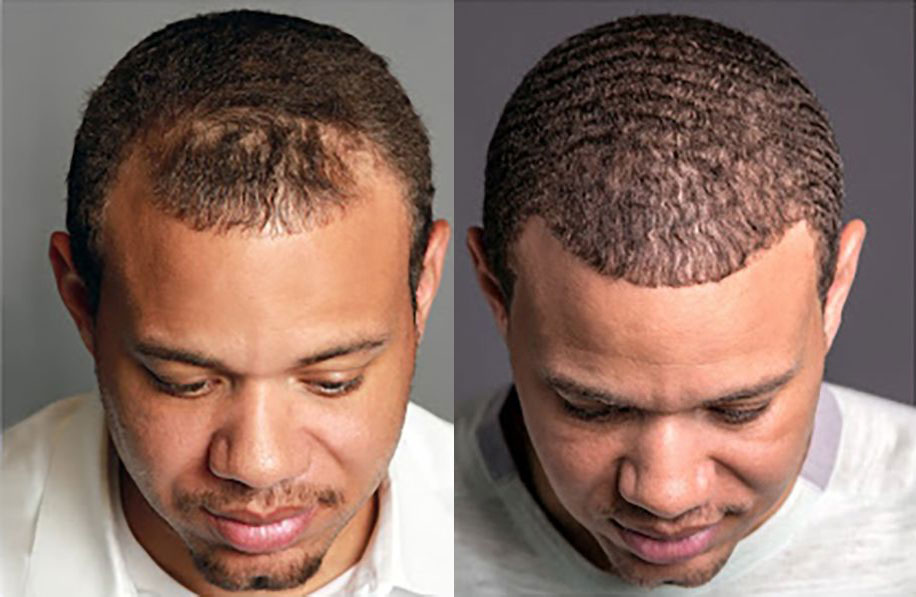Transformative Insights: Hair Transplant Before and After
In the realm of modern aesthetics, the journey from hair loss to hair restoration is nothing short of transformational. For those grappling with hair loss, the prospect of regaining a full head of hair is an empowering endeavor. This article delves into the remarkable journey of “Hair Transplant Before and After,” unveiling the emotional and physical evolution that individuals experience as they embark on this life-changing path.

Understanding Hair Loss: Causes and Effects
Hair loss isn’t merely a cosmetic concern; it has a profound impact on self-esteem and psychological well-being. Common causes of hair loss encompass genetics, hormonal imbalances, medical conditions, and lifestyle factors. The emotional effects are equally significant, often leading to a decline in confidence and self-assurance. This is where hair transplant steps in as a beacon of hope, offering a tangible solution to restore not just hair but also self-esteem.
The Hair Transplant Process: Techniques and Advances
The hair transplant process is a journey that encompasses both art and science. Two primary techniques dominate the landscape: Follicular Unit Transplantation (FUT) and Follicular Unit Extraction (FUE). FUT involves removing a strip of scalp and dissecting it into grafts, while FUE involves extracting individual follicles. Recent advancements, including robotic-assisted FUE and stem cell therapy, have revolutionized the field, providing more precise outcomes and reducing recovery times.
Preparing for Transformation: Consultation and Planning
Embarking on the journey of hair restoration begins with a comprehensive consultation. A skilled hair transplant specialist assesses various factors, including the extent of hair loss, donor area suitability, and the patient’s aesthetic goals. This collaborative approach ensures that the plan aligns with the patient’s vision. Hairline design, the choice between FUT and FUE, and realistic expectations are key aspects discussed during this phase. It’s a crucial step that lays the foundation for a successful transformation.
Stay tuned as we continue to explore the various phases of the “Hair Transplant Before and After” journey, unraveling the emotions, challenges, and triumphs that define this transformative experience.
Before the Scalpel: The “Before” Phase
Before the decisive moment arrives, the “before” phase is marked by a mix of emotions, from anticipation to nervous excitement. Individuals contemplating a hair transplant experience a blend of hope and apprehension. The decision to undergo a hair transplant is not taken lightly; it’s a choice rooted in the desire to regain lost confidence and embrace a more fulfilling self-image.
In the weeks leading up to the procedure, preparation takes center stage. Lifestyle adjustments may be necessary, such as refraining from smoking and avoiding certain medications that could affect the procedure’s outcome. Setting realistic expectations is paramount, as a hair transplant’s success isn’t measured solely by the physical transformation but also by the boost in self-esteem and overall well-being.
The Transplant Journey: Procedure and Experience
The day of the transplant marks the culmination of weeks or months of anticipation. The procedure typically takes several hours, during which hair follicles are strategically implanted into the recipient area. This meticulous process is carried out with the utmost precision, ensuring that the new hairline aligns harmoniously with the patient’s facial features.
Patients often wonder about the pain and discomfort associated with a hair transplant. Advanced techniques and local anesthesia contribute to a relatively pain-free experience. Patients may experience minor discomfort during the procedure, but this is generally well-tolerated. Post-procedure recovery varies from person to person; however, downtime is typically minimal, allowing individuals to resume regular activities within a few days.
Throughout the transplant journey, patients are supported by a team of professionals who prioritize both the technical aspects and the patient’s comfort. The process is not just about restoring hair; it’s about fostering an environment where individuals feel cared for and empowered.
Bridging the Gap: The “After” Phase
As the immediate post-transplant phase unfolds, the focus shifts to the “after” phase—a period of patience and perseverance. Swelling and scabbing in the recipient area are normal, and understanding this aids in managing expectations. Proper aftercare is crucial during this phase, as it contributes to optimal healing and graft survival. Following the recommended post-operative instructions, such as gentle washing and avoiding strenuous activities, is essential to ensure the best possible results.
Transitioning from the initial recovery phase to the long-term maintenance phase involves embracing the gradual growth of new hair. Patience becomes a virtue as the transplanted follicles shed, making way for new, stronger hair to emerge. The transformation isn’t instantaneous; rather, it’s a process that unfolds over several months.
In the next segment of our exploration, we’ll delve into the celebratory moments that “Hair Transplant Before and After” brings to individuals’ lives, as they witness the physical and emotional metamorphosis that unfolds.
Before the Scalpel: The “Before” Phase
Before the decisive moment arrives, the “before” phase is marked by a mix of emotions, from anticipation to nervous excitement. Individuals contemplating a hair transplant experience a blend of hope and apprehension. The decision to undergo a hair transplant is not taken lightly; it’s a choice rooted in the desire to regain lost confidence and embrace a more fulfilling self-image.
In the weeks leading up to the procedure, preparation takes center stage. Lifestyle adjustments may be necessary, such as refraining from smoking and avoiding certain medications that could affect the procedure’s outcome. Setting realistic expectations is paramount, as a hair transplant’s success isn’t measured solely by the physical transformation but also by the boost in self-esteem and overall well-being.
The Transplant Journey: Procedure and Experience
The day of the transplant marks the culmination of weeks or months of anticipation. The procedure typically takes several hours, during which hair follicles are strategically implanted into the recipient area. This meticulous process is carried out with the utmost precision, ensuring that the new hairline aligns harmoniously with the patient’s facial features.
Patients often wonder about the pain and discomfort associated with a hair transplant. Advanced techniques and local anesthesia contribute to a relatively pain-free experience. Patients may experience minor discomfort during the procedure, but this is generally well-tolerated. Post-procedure recovery varies from person to person; however, downtime is typically minimal, allowing individuals to resume regular activities within a few days.
Throughout the transplant journey, patients are supported by a team of professionals who prioritize both the technical aspects and the patient’s comfort. The process is not just about restoring hair; it’s about fostering an environment where individuals feel cared for and empowered.
Bridging the Gap: The “After” Phase
As the immediate post-transplant phase unfolds, the focus shifts to the “after” phase—a period of patience and perseverance. Swelling and scabbing in the recipient area are normal, and understanding this aids in managing expectations. Proper aftercare is crucial during this phase, as it contributes to optimal healing and graft survival. Following the recommended post-operative instructions, such as gentle washing and avoiding strenuous activities, is essential to ensure the best possible results.
Transitioning from the initial recovery phase to the long-term maintenance phase involves embracing the gradual growth of new hair. Patience becomes a virtue as the transplanted follicles shed, making way for new, stronger hair to emerge. The transformation isn’t instantaneous; rather, it’s a process that unfolds over several months.
In the next segment of our exploration, we’ll delve into the celebratory moments that “Hair Transplant Before and After” brings to individuals’ lives, as they witness the physical and emotional metamorphosis that unfolds.
Celebrating Progress: Hair Transplant Before and After
The pages of the “Hair Transplant Before and After” journey turn to reveal a chapter filled with celebration and newfound confidence. This stage is where individuals witness the culmination of their decision and the expertise of their chosen hair transplant specialist. As the transplanted hair begins to grow and flourish, the mirror becomes a canvas that paints the portrait of transformation.
The Visual Journey
One of the most remarkable aspects of the hair transplant process is the visual transformation. Individuals who once faced receding hairlines or thinning crowns now stand before mirrors, witnessing the emergence of hair they once thought was lost forever. The “after” photos capture not only the rejuvenation of hair but also the restoration of self-assurance. These photos tell a story of resilience, courage, and the pursuit of personal well-being.
Rediscovering Confidence
Hair loss can often erode self-confidence, affecting both personal and professional aspects of life. As the new hairline takes shape and the transplanted hair gains strength, a sense of renewed self-assurance emerges. Individuals no longer feel the need to conceal their thinning areas or receding hairlines. Instead, they step into the world with their heads held high, empowered by their transformed appearance.
Embracing New Possibilities
Beyond the physical changes, the impact of “Hair Transplant Before and After” extends to all areas of life. Individuals find themselves embracing new opportunities with a sense of vitality that comes from feeling good in their skin. From social interactions to professional pursuits, the restored confidence radiates outward, reshaping relationships and experiences.
As we near the conclusion of our exploration, the final sections of the “Hair Transplant Before and After” journey await our discovery. In the upcoming segments, we’ll delve into the nuances of long-term maintenance, address common queries in the FAQ section, and offer a poignant conclusion that encapsulates the transformative essence of this remarkable journey.
Long-Term Success: Maintenance and Care
The conclusion of the hair transplant journey isn’t the end—it’s the beginning of a new chapter. Long-term success hinges on diligent maintenance and care to ensure that the transformed hair remains healthy and vibrant. While the initial stages of hair growth can be exhilarating, maintaining the results requires commitment and a tailored approach.
Post-Transplant Hair Care
After the initial recovery phase, a well-structured hair care routine becomes paramount. Using gentle shampoos and avoiding harsh chemicals is essential to protect the newly transplanted hair and the existing hair. Hydration and nourishment play a crucial role; using conditioners and hair serums can contribute to maintaining softness and shine.
Sun Protection and Lifestyle Considerations
Exposure to the sun’s UV rays can impact the health and color of both the transplanted and existing hair. Protecting your scalp from the sun’s rays with hats or sunscreen becomes a vital practice. Additionally, leading a healthy lifestyle by consuming a balanced diet, staying hydrated, and managing stress can foster overall hair health.
Regular Check-ins and Follow-Ups
Staying connected with your hair transplant specialist through regular check-ins and follow-up appointments is key. These appointments allow professionals to monitor your progress, address any concerns, and make necessary adjustments to ensure the best long-term results.
Conclusion: Embracing Transformation
The journey from Hair Transplant Before and After encapsulates not only physical transformation but also emotional rejuvenation. From the decision to undergo a transplant to witnessing the restored hairline and renewed self-assurance, this journey empowers individuals to rewrite their narratives.
As you embark on your hair restoration journey, remember that transformation is more than just a visual change—it’s about rediscovering confidence, embracing new opportunities, and celebrating the journey of self-discovery.
Stay inspired, stay confident, and embrace the transformative power of the “Hair Transplant Before and After” journey.
FAQs: Hair Transplant Before and After
Q1: Is a hair transplant a permanent solution for hair loss?
A1: Yes, a hair transplant involves moving healthy hair follicles from one area to another. These transplanted follicles are resistant to the hormone responsible for hair loss, making the results largely permanent.
Q2: How long does the hair transplant procedure usually take?
A2: The duration varies based on the technique and the number of grafts. On average, a hair transplant can take anywhere from 4 to 8 hours.
Q3: What is the recovery period after a hair transplant?
A3: Most individuals can resume their regular activities within a few days after the procedure. Full recovery, including the shedding and regrowth phases, can take several months.
Q4: Are there any age limitations for undergoing a hair transplant?
A4: While age isn’t the sole determinant, individuals in their late 20s or older are generally better candidates as their hair loss pattern is more predictable.
Q5: Can I style my transplanted hair like normal hair?
A5: Yes, once the transplanted hair has fully grown, you can style it just like your natural hair. This includes cutting, coloring, and using heat styling tools.
Q6: Is hair transplant suitable for all types of hair loss?
A6: Hair transplant is effective for androgenetic alopecia (genetic hair loss) and specific cases of alopecia areata. Consultation with a specialist can determine suitability.
Q7: Will the transplanted hair match my natural hair color and texture?
A7: Skilled hair transplant specialists carefully select grafts that match your existing hair color and texture, ensuring a seamless blend.
Q8: Are there any risks or side effects associated with a hair transplant?
A8: While uncommon, potential risks include infection, scarring, and folliculitis. These risks are minimized with proper care and a skilled surgeon.
Q9: Can I have more than one hair transplant procedure?
A9: Yes, multiple sessions may be needed for extensive hair loss or to achieve the desired density. Each session is planned based on individual progress.
Q10: When can I expect to see the final results of my hair transplant?
A10: The full results become apparent around 12 to 18 months after the procedure, as the transplanted hair reaches its complete growth cycle.




